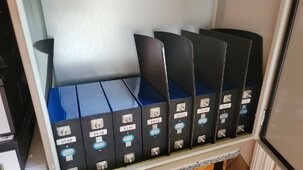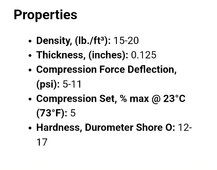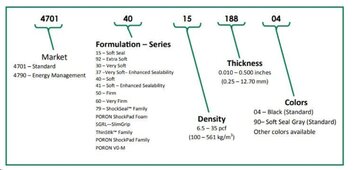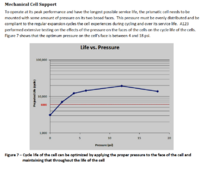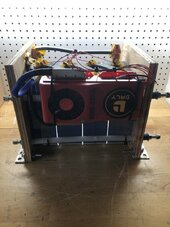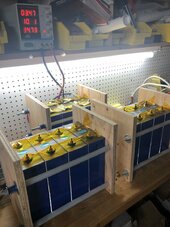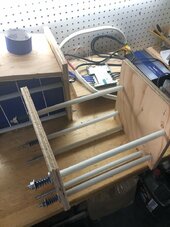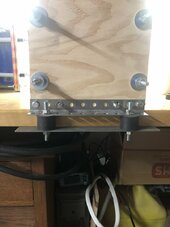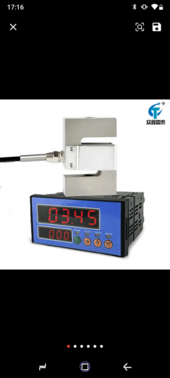Let me come back to the confusing matter of compressing prismatic LiFePo4 cells.
Let's focus on the thread subject and not diverge into whether you should or shouldn't compress.
Manufacturer recommendation is to compress with the force of 300kgf +/- 20kgf
That means 2941 N over the surface area of the cell, correct? (1kgf=9.807N)
The cell I have in mind is 204mm by 174mm that's equals to 0.035m2
So the pressure is 2941N/0.035 ~84kPa
or 12.2 psi which is in accordance with discussions on similar threads
12 psi doesn't seem like much but that is 12 pounds on every square inch, over entire surface of the cell it ads up to 300kg or 660 pounds sitting on top of the cell (covered with rigid plate so the compressions is distributed evenly)
That's not hand squeeze like suggest on some threads that's 4 adults sitting there, am I right?
Any ideas how to achieve the correct, pressure in a budget limited, DIY environment?
After browsing through forums I understand that calculating compression force from torque gives ~40% uncertainty, far to high to meet manufacturer recommendation.
Any input welcome
Cheers
Let's focus on the thread subject and not diverge into whether you should or shouldn't compress.
Manufacturer recommendation is to compress with the force of 300kgf +/- 20kgf
That means 2941 N over the surface area of the cell, correct? (1kgf=9.807N)
The cell I have in mind is 204mm by 174mm that's equals to 0.035m2
So the pressure is 2941N/0.035 ~84kPa
or 12.2 psi which is in accordance with discussions on similar threads
12 psi doesn't seem like much but that is 12 pounds on every square inch, over entire surface of the cell it ads up to 300kg or 660 pounds sitting on top of the cell (covered with rigid plate so the compressions is distributed evenly)
That's not hand squeeze like suggest on some threads that's 4 adults sitting there, am I right?
Any ideas how to achieve the correct, pressure in a budget limited, DIY environment?
After browsing through forums I understand that calculating compression force from torque gives ~40% uncertainty, far to high to meet manufacturer recommendation.
Any input welcome
Cheers



